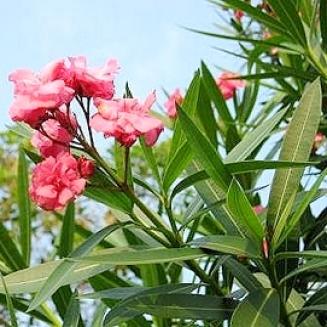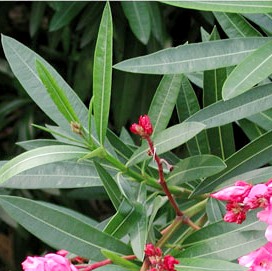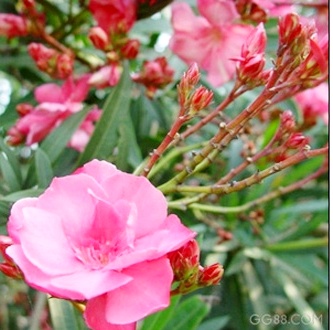
Code: NOS
|
:
|
English names: Roseberry spurge, sweet-scented oleander, rose-bay.
Description: Small evergreen bush, 5-6m. high, much-branched. Young shoots triangular. Bark ash-coloured. Leaves in whorls of 3, oblong-lanceolate, dark-green above. Inflorescence in terminal cyme; flowers pink, white or yellow. Follicles in pairs, narrow, cylindrical, straight. Seeds numerous, tipped with a coma of brownish hairs at one end.
Flowering period: May - July.
Distribution: Cultivated for its elegant foliage and handsome flowers.
Parts used: The leaves, harvested just before or during the flowering period and immediately dried in the sun or in dryers.
Chemical composition: The leaves contain cardiotonic glucosides oleandrin, neriifolin, adynerin and neriantin; and flavonol glucosides: rutin, kaempferol-3 rhamnoglucoside.
Therapeutic uses: Oleandrin (neriolin) extracted from the leaves has a salutary effect in heart failure. It is more quickly absorbed by mouth and is less cumulative than digitoxin. It is prescribed orally in a dose of 0.1 mg, 2 to 3 times per day in the form of a 1/5000 solution in 70° alcohol or of 0.1 mg tablets. An aqueous maceration of the pounded seeds can be used as an insecticide.

